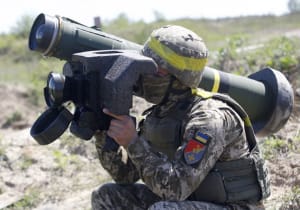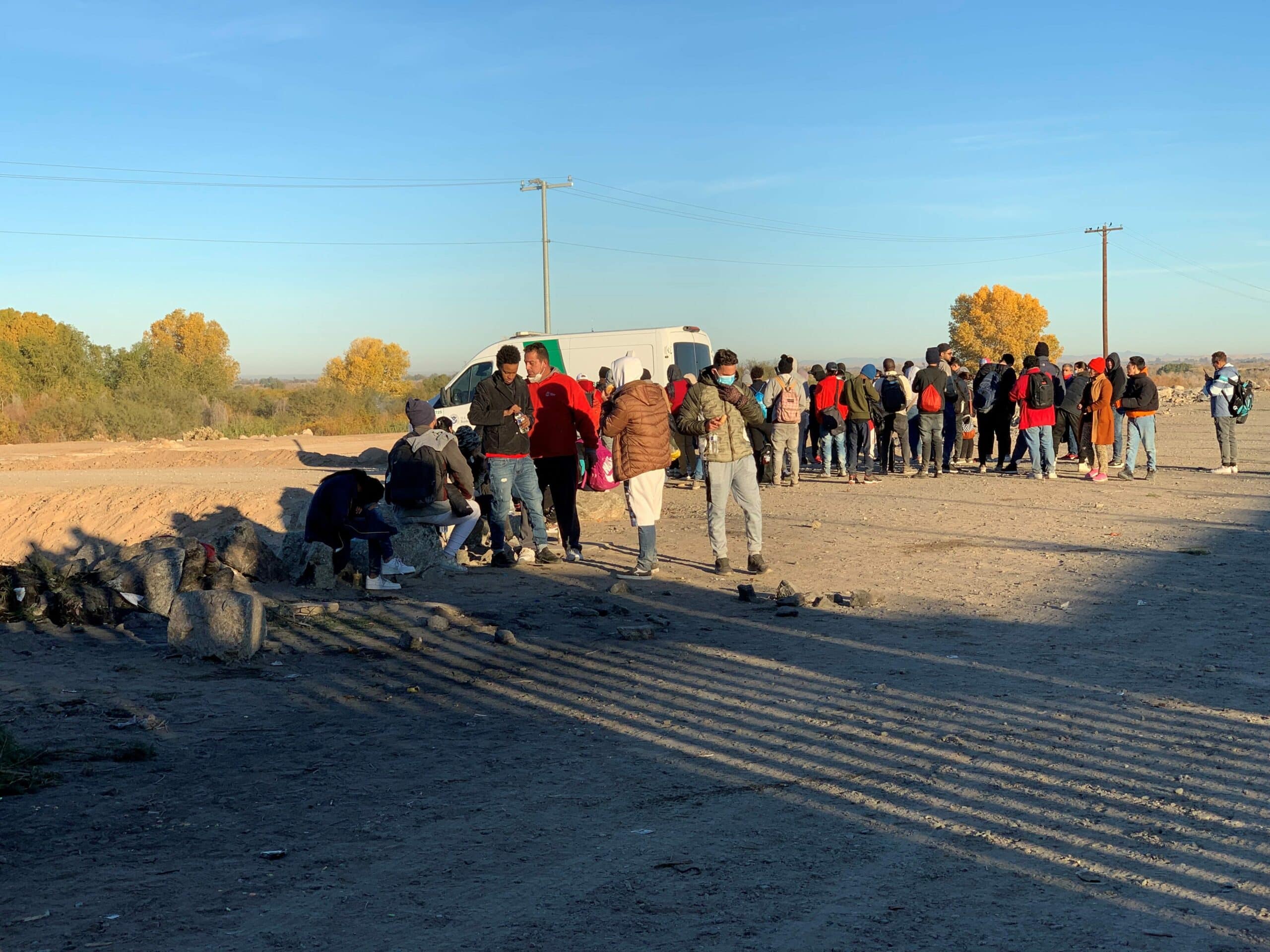The weapons helping Ukraine fight back

Ukraine has managed to do something pretty remarkable since Russia launched a multi-axis invasion on Feb. 24, 2022: It has survived. More than that, it has retaken about half the territory Russia seized in hits initial strike, and Ukrainian President Volodymyr Zelensky has pledged to expel Russia from Ukraine entirely in 2023.
Underpinning the accomplishments Ukraine has already notched is a nimble and smart Ukrainian military, a unified population willing to fight and suffer to retain their homeland, and tens of billions of dollars worth of weapons donated primarily by the U.S. and its NATO allies.
SEE MORE Why ‘the Russian army just isn’t very good’ SEE MORE Can climate change lose Russia the war in Ukraine? SEE MORE Will Putin survive his ‘catastrophic’ Ukraine war?
At the time Russia invaded, Ukraine already had about 900 battle tanks, 1,176 barrel artillery systems, 1,680 multiple launch rocket systems (MLRS), thousand of anti-tank guided weapon (ATGW) launchers, about 50 working MiG-29 fighter jets, some 32 Su-27 fighters, and enough ammunition to last at least six weeks, according to an assessment of the war by Britain’s Royal United Services Institute (RUSI) think tank. Russia had more of all these things, and better versions generally, but Ukraine wasn’t starting with nothing.
Here’s a closer look at some of the weapons and systems Ukraine has used to keep Russia at bay.
Portable rocket-launchers
Ukraine was able to stave off disaster in the first phase of the war — when Russia surprised Ukraine by attacking Kyiv as well as the Donbas and southern Ukraine — with its air defense systems, deception, and portable rocket-launchers, especially Javelin and NLAW (Next Generation Light Anti-tank Weapon) shoulder-fired anti-tank missiles and man-portable air-defense systems (MANPADS), including the U.S. Stingers.
Anatolii Stepanov/Anadolu Agency via Getty Images
FGM-148 Javelin: The Javelin anti-tank missile system, manufactured by Raytheon and Lockheed Martin and in service since 1996, is a fire-and-forget launcher that uses infrared targeting to guide a missile to its target after it’s fired. The missiles are fired from up to 2,500 meters (8,200 feet) and their armor-piercing warheads can destroy a tank or other armored vehicle, typically attacking it from above, where the armor is thinner. There is also a direct-fire mode for less-armored targets. It can be operated by one or two people.
NATO has provided thousands of Javelins to Ukraine, and they helped to “defeat Russian armor as they were approaching during the initial phase of the invasion,” George Barros at the Institute for the Study of War think tank told Insider. When a massive column of disorganized Russian forces got crowded together on a road south to Kyiv, Ukrainian troops were able to grind the column to a halt and pick off tanks and armored vehicles with portable rocket launchers, helping save the capital from capture.
Ukraine had its own supply of Soviet-era and domestically designed shoulder-fired rocket systems, but they required 30 days of training in order to operate them properly, RUSI said. The “Javelin, by contrast, was much easier to employ, requiring days to train crews.”
NLAW: The NLAW, designed by Sweden’s Saab Bofors Dynamics in a joint Swedish-British venture, has been in service since 2009. Like the Javelin, it is a fire-and-forget weapon, but it’s lighter and operates at closer range. It is also a one-shot weapon that is discarded after firing. And you can fire from anywhere, day or night, explained Saab’s director of product management, Lars-Örjan Hovbrandt. “You can fire down 45 degrees and can shoot from inside a building, from a basement or from the second floor of a building out of the range of most tanks.” It can also destroy a tank if only a hatch or antenna is visible, he said.
A soldier can be trained on the NLAW system in just an hour, Hovbrandt said. Its weight and ease of use made it popular among Ukrainian soldiers. “NLAW was absolutely critical to the defeat of Russian ground thrusts in the early stages of the war,” especially north or Kyiv, RUSI’s Justin Bronk told BBC News.
Russia’s invading force entered Ukraine with about 2,800 combat-ready tanks, plus other 400 among Russian proxy forces in the Donbas, RUSI reported. By mid-January, at least 1,600 of those tanks are believed to have been destroyed.
FIM-92 Stinger: The Stinger portable surface-to-air missile is made primarily by Raytheon Missiles & Defense, and has been in service since 1981. In the early part of Russia’s invasion, Ukraine used air-defense towers and MANPADS in tandem, the former forcing Russian aircraft to fly at low altitudes, where “they fell into the zone of impact of MANPADS,” RUSI explains.
Ukraine’s underestimated air-defense system managed to crucially deny Russia’s superior air force control of airspace. But as Russia turned to targeting civilian infrastructure with barrages of missiles, Ukraine’s Soviet-era air defenses were stretched too thin to cover the entire country. Ukraine started using Stingers to shoot down Russian missiles. “Right now, our air defense is literally a guy with a Stinger,” Daria Kaleniuk at Ukraine’s Anti-Corruption Action Center told The Washington Post in October. That was before more sophisticated Western air systems arrived.
Drones
The minimal presence of fighter jets and bombers after the first wave of invasion, as Ukraine and Russia both ramped up their air defenses, did not end the air war over Ukraine. “We are currently witnessing a drone war,” Samuel Bendett, an expert on uncrewed aerial vehicles (UAVs), told Popular Mechanics. “This is probably the first large-scale war where proprietary military and commercial drones are used so extensively.”
Aziz Karimov/Getty Images
Bayraktar TB2: Developed by Turkey’s Baykar and in service since 2014, the Bayraktar TB2 is a fixed-wing medium altitude, long endurance UAV that can stay airborne for 27 hours at an altitude of up to 25,000 feet and fire four MAM-C or MAM-L laser-guided smart bombs. They are remotely operated from as far away as 185 miles, and they’re portable. “You can take the drone and flight equipment to a highway, it takes only 15-20 minutes to make it operational,” defense analyst Tayfun Ozberk tells Naval News.
Ukraine started buying TB2s in 2019 and first used them in combat in 2021. They proved very effective in the early part of the war, destroying Russian tanks, armored vehicles, supply convoys, and air defense systems, and crucially, providing exact coordinates for Ukrainian artillery strikes. Ukraine’s air force chief, Lt. Gen. Mykola Oleshchuk, called the TB2 “life-giving” in the first week of Russia’s invasion.
The Ukrainian Navy’s TB2s were instrumental in helping Ukraine retake Snake Island, destroying Russian boats, air defenses, and at least one troop-transport helicopter on the strategically and symbolically important rock in the Black Sea. But the liberation of Snake Island in June appears to have been the last big campaign for the TB2. Russia got better at tracking and shooting down the TB2s, and Ukraine started pulling them from risky sorties.
Switchblade: The U.S. has given Ukraine more than 700 Switchblade 300 “kamikaze” drones, small loitering tactical UAVs developed by AeroVironment to destroy individual combatants or non-armored vehicles. Weighing in at six pounds apiece, they are fired from a compact launch tube, at which point their propeller and wings flip out like a switchblade. They can stay silently airborne for about 15 minutes at 60 miles per hour, and their explosive fragmentation warheads ram into their designated target at 100 mph — unless the operator waves them off at the last second.
The U.S. had high hopes for the donated Switchblades, and while Ukraine’s military has published videos showing the drones “taking down a machine gun nest, striking soldiers servicing artillery, or hitting a group of soldiers riding on top of a tank,” they haven’t proved popular with Ukrainian troops, Mark Sumner notes in his comprehensive Daily Kos field guide to Ukrainian drones. Some platoons have reportedly “been unwilling to carry along a weapon that provides a one-time, one-target potential kill,” and they “have made it clear they would rather carry something like a modified consumer drone that can be used in multiple roles.”
The larger, Javelin-sized Switchblade 600 has “a longer range, a more powerful warhead,” and acts as “a hunter-killer for seeking out armor” far behind enemy lines, Sumner writes. In fact, with a range of 25 to 55 miles and the ability to destroy tanks, missile batteries, and command centers, “the Switchblade 600 looks to be tailor-made for Ukraine” — but unfortunately, the U.S. hasn’t delivered any yet.
Modified consumer drones: “In the months after the Russian invasion, Ukrainian techies worked out how to put grenades on the type of cheap consumer drones sold online by companies such as DJI,” Gillian Tett writes at the Financial Times. The DJI Mavic 3, for example, costs about $2,000, and “Ukrainian soldiers are taking out armored vehicles worth millions of dollars” with these “cheap homemade drones,” The New York Times adds. One drone system developed by the Ukrainian military, called Perun, sends a UAV to hover about 500 feet above a target, release its payload, and return to its operator.
The drones are audible from the ground, but the Russian forces “don’t have much time” to shoot them down, Ukrainian 1st Lt. Serhiy told the Times. “The technology is not perfect,” and the drones don’t work in all weather or for extended periods of time, he added, “but it works when it works.” Ukraine has also retrofitted and sent old Soviet Tupolev Tu-141 drones deep into Russia to attack airbases.
Attack drones haven’t been surviving very long, however, RUSI reports. Off all the drones Ukraine deployed through the first five months of the war, “around 90 percent were destroyed. The average life expectancy of a quadcopter remained around three flights. The average life expectancy of a fixed-wing UAV was around six flights.”
The “new wave” of drone technology and entrepreneurial initiative among Ukrainians “has already changed the trajectory of the war,” Tett writes at the Financial Times. Ukraine is “absolutely a weapons lab in every sense because none of this equipment has ever actually been used in a war between two industrially developed nations,” one source familiar with Western intelligence told CNN. “This is real-world battle testing.”
Howitzers, HIMARS, and Patriots
By early May 2022, “the Ukrainian army had mostly repelled Russia from Kyiv, but that early offensive was followed almost immediately by an offensive in Ukraine’s flat eastern Donbas region,” where “heavy artillery began to dominate the action” — and Russia had a big advantage, Hope Hodge Seck writes at Popular Mechanics. Ukraine had some Soviet-era artillery weapons, but Russia’s military doctrine emphasizes the overwhelming use of artillery — and has since at least the 14th century. “The Russian advantage in artillery during May and June 2022 in Donbas was 12:1,” RUSI adds. That started changing when the U.S. and its allies started shipping Ukraine modern Western howitzers.
Anatolii Stepanov/AFP via Getty Images
M777 Howitzers: The M777, manufactured by Britain’s BAE Systems, is an advanced towed artillery system that is much smaller and lighter, at 9,300 pounds, than previous howitzers — and comparable Russian artillery — thanks largely to the use of titanium alloy. It fires 155mm shells up to 19 miles, or 25 miles with M982 Excalibur GPS-guided shells, and a crew of eight can fire five rounds in under 2 minutes. Each 95-pound high-explosive shell has a blast radius of about 230 feet, delivering “the destructive firepower of a Hellfire missile,” Alex Hollings writes at Sandboxx News.
The U.S. and NATO allies started delivering M777 howitzers to Ukraine in April, and by mid-January 2023 the U.S. alone had sent 160 of the howitzers, more than a million 155mm artillery rounds and another 5,800 precision-guided rounds for the M777. Right away, Ukrainian artillery crews said the superior precision and mobility of the Triple-7 changed the course of the war. The M777s were critical in Ukraine’s destruction of Russian forces and armored vehicles as they tried to cross the Siverskyi Donets River near Bilohorivka on May 11, 2022.
Using the M777 requires training, and to maintain its accuracy, the howitzer’s barrel needs to be replaced after a certain number of rounds have been fired. In the late spring and early summer, “many of the M777 howitzers that were delivered became inoperable due to maintenance issues after being misused by crews,” RUSI reports. But now Ukrainian artillery crews are getting real-time live support from Western troops and civilian contractors through call centers and secure chat rooms in Poland, The Associated Press reports.
A U.S. officer said the Ukrainians are “using these systems in ways that we didn’t necessarily anticipate,” so “we’re actually learning from them by seeing how much abuse these weapon systems can take, and where’s the breaking point.”
HIMARS: The M142 High Mobility Artillery Rocket System (HIMARS), made by Lockheed Martin and BAE Systems, is a truck-mounted multiple launch rocket system (MLRS) that can fire either six GPS-guided MLRS rockets or one Army Tactical Missile System (ATACMS) missile. The rocket launcher rides atop of a five-ton armored tactical vehicle, and a crew of three can fire an array of MLRS rockets and missiles from 650 feet to up to 50 miles, for the rockets provided to Ukraine. (ATACMS missiles, which Ukraine doesn’t have, can reach up to 186 miles.)
For Ukraine, HIMARS provided greater distance — twice as far as the M777, and farther than Russia’s BM-30 Smerch rockets — and pinpoint precision. “HIMARS and other precision weapons are turning the course of war in our favor,” Zelensky wrote on Facebook in late July. By mid-January, the U.S. had given Ukraine 38 HIMARS, plus ammunition.
“The HIMARS stopped the bleeding in eastern Ukraine with regards to the rolling Russian offensive that was picking up steam in sort of late spring, early summer,” ISW’s George Barros told Insider, adding that Ukraine made them a “game changer” by targeting Russian artillery ammunition stockpiles and by severing Russian supply lines, notably by destroying bridges across the Dnipro River. The introduction of HIMARS into the war, RUSI assessed, “can be seen as the point where the Russian offensive on Donbas ended and the war entered a new phase.”
MIM-104 Patriot: The Patriot (Phased Array Tracking Radar for Intercept on Target) mobile surface-to-air guided missile system, made by Raytheon and first used in combat in the 1991 Persian Gulf War, is designed to shoot down cruise missiles, aircraft, and shorter-range ballistic missiles. One Patriot battery consists of a truck-mounted launch system, eight launchers that can each fire four missile interceptors, the namesake radar, a control station, and a mobile generator. It is considered the most advanced air defense system the U.S. has to offer. Each battery requires up to 90 people to operate and maintain it.
After Russia’s humiliating withdrawal from Kherson, the Kremlin ramped up its attacks on Ukrainian civilian infrastructure, sending cruise and ballistic missiles and Iranian-made drones to destroy Ukraine’s electricity and water infrastructure. In response, the U.S. agreed in December to send one Patriot battery to Ukraine, and Germany and the Netherlands announced in January that they will also each throw in Patriot launchers and missiles.
The Patriot systems will extend the range of Ukraine’s missile defense system to about a 100-mile radius, but it has its limitations, such as price: Each Patriot missile costs about $3 million, so Ukraine has to find other solutions for the Iranian “kamikaze” drones Russia keeps firing at its cities and power plants. “Firing a million-dollar missile at a $50,000 drone is a losing proposition,” Mark Cancian at CSIS tells AP.
Tanks and armored vehicles
Russia and Ukraine have both had hundreds of tanks in the battle since the beginning, mostly T-72s and upgraded successors. Moscow’s army started out with a lot more of them, with better protection, sighting systems, and firing range, but “Russian losses thus far have been staggering” — about 1,640 of the 3,300 tanks it sent into Ukraine, according to open-source reporting, Dean Lockwood writes at Defense & Security Monitor. Meanwhile, “the Ukrainian Army has actually managed to increase its tank inventory, thanks to its recovery of Russian tanks abandoned in the field” and donations of T-72s from former Soviet countries now in NATO.
To give Ukraine an edge in the coming offensives, the U.S. and NATO allies committed first to sending armored infantry carriers and finally, modern main battle tanks. The U.S., German, and British tanks are meant to be the centerpiece of Ukrainian mechanized combined arms operations to punch through Russian defenses, sever supply routes, and reclaim purloined territory.
Mateusz Wlodarczyk/NurPhoto via Getty Images
Bradleys: The M2 Bradley Fighting Vehicle, manufactured by BAE Systems, is a medium-armored troop carrier with enough firepower to destroy a tank. The 80,000-pound vehicle is crewed by a commander, a gunner, and a driver, and it carries up to seven soldiers around the battlefield, shielded from enemy fire. The commander and gunner have separate viewing systems that allow them to find and fire at targets from inside the vehicle’s armor.
“The Bradley turret is awesomely powerful,” with a M242 25mm Bushmaster autocannon that fires up to 200 rounds a minute, a 7.62 coaxial machine gun, and a tube-launched, optically tracked, wireless-guided (TOW) “tank killer” missile launcher, retired Lt. Gen. Mark Hertling writes in The Bulwark. It travels up to 38 miles per hour on tank treads, “can go over 400 miles on a full tank, and it maintains an exceedingly smooth ride even over rough terrain (which helps with firing the weapons on the move).”
The U.S. in early January pledged to send Ukraine 109 Bradleys, and the first 60 shipped out a few weeks later. The Bradleys, along with French AMX-10 RC and German Marder infantry fighting vehicles, could be the vanguard of an armored force Ukraine deploys to overrun Russian positions. “Giving Bradleys to the Ukrainians will help them move faster than the Russians can adjust, which will be key to victory,” writes Hertling, a former tank commander who fought in Bradleys in the Gulf War.
Strykers: The eight-wheeled M1126 Stryker armored combat vehicle, made by General Dynamics Land Systems and in service since 2002, is newer and significantly lighter than the Bradley. Its crew of two can transport nine infantry troops at sustained speeds of 60 mph. The Stryker was designed to fill a gap between light infantry with speed but little firepower and heavier, slower armored vehicles. It is armed with an M2 .50 caliber machine gun or MK-19, and a 40mm grenade launcher, all of which are remote-controlled from inside the armed cabin.
The U.S. is sending at least 90 Strykers to Ukraine. Retired Army Maj. Brad Duplessis, a Stryker commander in Iraq, told The Drive he saw Strykers survive behind hit with RKG rocket-propelled anti-tank grenades, improvised explosive devices, and other explosive heavy weapons.
Leopard 2: The Leopard 2, made by Germany’s Krauss-Maffei Wegmann (KMW), is considered one of the best main battle tanks in the world. A crew of four drives the 55-ton tank at speeds of up to 42 mph, and its weapons include a NATO-standard 120mm smoothbore gun and two 7.62mm machine guns. It has a range of about 310 miles and its main gun can fire about 2.2 miles.
“The Leopard 2 is more advanced than many of the Soviet-era tanks fielded by both Russian and Ukrainian forces,” The Washington Post reports. The Leopards are also more agile than Russia’s T-model tanks, says Ralf Raths, director of Germany’s Panzer Museum. “Imagine a boxer who cannot move freely in the ring, but only in one direction,” he told AP. “The other boxer, who can move in all directions, has a big advantage and that is the case with the Leopards.”
The German tanks are easier to maintain than the U.S. M1 Abrams tank, and crucially, there are more of them in Europe, about 2,000 across 13 countries. Germany is sending Ukraine 14 of its Leopards, and other countries are chipping in dozens more.
M1A2 Abrams: “When it comes to main battle tanks, the Leopard 2 has one main rival: The U.S.-made M1 Abrams,” the Post reports. The Abrams, manufactured by General Dynamics Land Systems, has been in service since 1980 — though the more advance M1A2, which the U.S. is sending to Ukraine, dates back to 1990. The Abrams, like the Leopard 2, is operated by a crew of four, features a 120mm smoothbore gun and 7.62mm machine gun, and can travel at up to 42 mph. It has better armor than the Leopard but is more complicated to maintain and repair, especially its turbine engine.
The M1A2, unlike its M1A1 predecessor, runs on a digital system. It’s “the difference between a plug-in phone — a rotary phone — and that iPhone you’ve got in your hand,” retired Army Gen. Robert Abrams, whose father was the tank’s namesake, tells CNN. The digital system allows Abrams tanks to automatically exchange information with other vehicles, and the commander gets an independent thermal viewer to help identify targets. The M1A2 is “far superior in lethality and survivability and mobility” than anything Russia has on the battlefield, Abrams said.
The U.S. is sending Ukraine 31 Abrams — enough for three battalions and a command tank. But it will take several months before Ukrainian tankers are trained and operating Abrams on the battlefield.
Spartz says she won’t run for office in 2024

GOP Rep. Victoria Spartz of Indiana announced Friday that she will not run for any office in 2024, opting out of the race for the seat held by Republican Sen. Mike Braun, who is running for governor, while also declaring her intention to leave Congress.
Families of US detainees in China urge Blinken to make them ‘number one’ priority on his trip

Harrison Li and Katherine Swidan both worry they may never see their loved ones again.
Rep. Ilhan Omar vows to ‘continue to speak up’ after GOP House removes her from committee

This post was originally published on this siteRep. Ilhan Omar vowed to ‘continue to speak up’ in a fiery after being ‘silenced’ by the GOP who ousted her from the House Foreign Affairs committee.
Jobs report is out today. Live updates on stock market, unemployment rate and more.

This post was originally published on this siteThe current unemployment rate is 3.5%. It could rise today with data from January’s jobs report. Follow our live updates for the latest news.
What to know about Nikki Haley’s presidential campaign

Donald Trump is about to get his first challenger for the GOP presidential nomination in 2024: Nikki Haley. Politico reports that Haley — the former South Carolina governor and ambassador to the United Nations — is expected to announce her presidential candidacy on Feb. 15. Her candidacy is something of a surprise, as she once said she would never run against Trump. Now? “It’s bigger than one person,” she told Fox News. “And when you’re looking at the future of America, I think it’s time for new generational change.” Who is Nikki Haley, and what are her chances of actually being the Republican nominee? Here’s everything you need to know:
Who is Nikki Haley?
Haley is the daughter of Indian immigrants. (Her birth name was Nimrata Nikki Randhawa.) Her parents built a gift and clothing shop where she started keeping the books as a teenager. “My mom built a successful business. My dad taught 30 years at a historically Black college. And the people of South Carolina chose me as their first minority and first female governor,” Haley said at the 2020 Republican National Convention. She was elected governor of South Carolina in 2011 — the first woman and first ethnic minority to hold the post — where she oversaw the removal of the Confederate battle flag from state capitol grounds after the massacre at a Charleston African Methodist Episcopal church in 2015. In 2017, President Trump made her America’s ambassador to the United Nations. She left the post at the end of 2018.
What’s Haley’s case for being president?
She’s calling for generational change. “I don’t think you need to be 80 years old to go be a leader in D.C.,” she said in that Fox News interview, a clear reference to the advanced ages of both President Biden and former President Trump. NBC News points out that Haley has a number of credentials: A former governor with national security experience who is the “rare member of Trump’s cabinet who didn’t get mired in scandal or controversy.” And she benefits from her link to South Carolina, which holds one of the earliest — and most influential — presidential primaries. But in the battle for the GOP nomination, she may have one significant shortcoming: “She appears to have no calling card in the GOP culture wars” like Trump and another likely presidential contender, Florida Gov. Ron DeSantis (R).
Why is Haley running against Trump?
Trump seems to be wondering the same thing. Business Insider reports that after news emerged of Haley’s likely candidacy, Trump shared an April 2021 video of her saying she wouldn’t run against him in 2024. “I would not run if President Trump ran,” Haley said at the time. So what changed? Time points out that Haley has a rather complicated history with Trump — “sharply critical” of him during the 2016 primaries, but then pivoting to serve in his administration. After the Jan. 6 insurrection, she suggested that Trump’s political career was over: “I think he’s lost any sort of political viability he was going to have.” But then she flipped back a year later, telling The Wall Street Journal that “we need him in the Republican Party.” Now she’s running against him — but sought his blessing first. “I talked to her for a little while, I said, ‘Look, you know, go by your heart if you want to run,'” Trump said. “She’s publicly said that ‘I would never run against my president, he was a great president.'”
Is anybody else running?
Not yet. The New York Times points out that the GOP presidential field has been slow to materialize: Nobody wants to take on Trump directly, “wary of becoming a sacrificial lamb on Mr. Trump’s altar of devastating nicknames and eternal fury.” Some possible candidates seem to hope that the justice system — prosecutors in New York or Georgia, perhaps — will take care of their Trump problem for them. In any case, there are a number of other prominent GOP names floating around as possible candidates. DeSantis is considered most likely, but Bloomberg reports that other possibilities include former Vice President Mike Pence, former Secretary of State Mike Pompeo, Sen. Tim Scott (R-S.C.), Virginia Gov. Glenn Youngkin (R), and several other governors.
What are Haley’s odds of winning the GOP nomination?
Not great at the moment. CNBC points out one recent poll showing that Trump leads a potential GOP primary field with 48 percent of the vote — while Haley comes in at just 2 percent. But the presidency may not be the real prize for Haley. New York’s Ed Kilgore says there is a “perception that she’s really running for vice-president.” (There were reports in 2020 that she was under consideration to replace Pence as Trump’s VP pick.) The vice presidency might be “an acceptable consolation prize,” Kilgore writes. After all, she’s only 51. There are still a lot of possible presidential races in her future.
Comparing the classified document discoveries plaguing Biden, Trump and Pence

Washington (CNN) — President Joe Biden, former President Donald Trump and former Vice President Mike Pence are all facing scrutiny regarding their potential mishandling of classified documents.
Homeland Security intel chief describes revamp of department amid radicalization in the US

The Department of Homeland Security is reviewing the structure and mission of its intelligence division as the US navigates a period of heightened polarization and radicalization, the agency’s intel chief said in an interview with CNN.
Fed meeting today: Live updates as Federal Reserve expected to raise rates by quarter of a point

This post was originally published on this siteThe FOMC meeting is today. Follow along for live updates leading up to the interest rate decision and Fed Chairman Jerome Powell’s news conference.
Migrants from many countries are arriving at the US-Mexico border. Here’s why

This post was originally published on this siteTwenty years ago, migrants who crossed the southern U.S. border mostly came from Mexico. Now they are from many countries.
Tagged and more recentlychinaColombiaCubaEcuadorel SalvadorGuatemalaHaitiHondurasImmigrationmigrantsNicaraguaRussiaUS-Mexico borderVenezuela